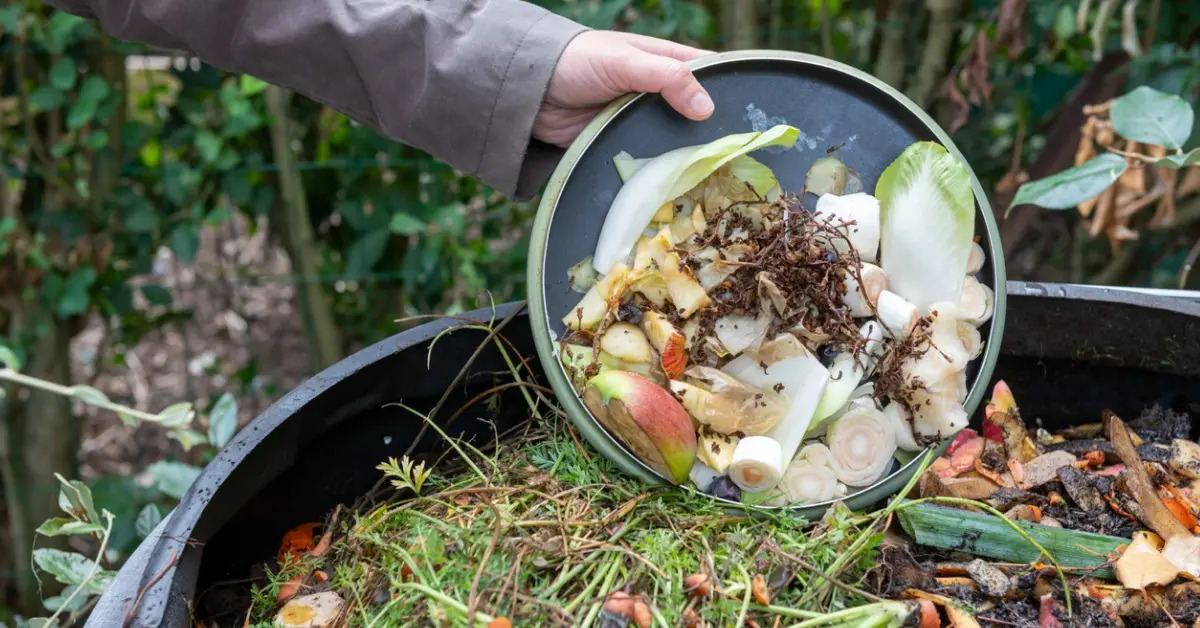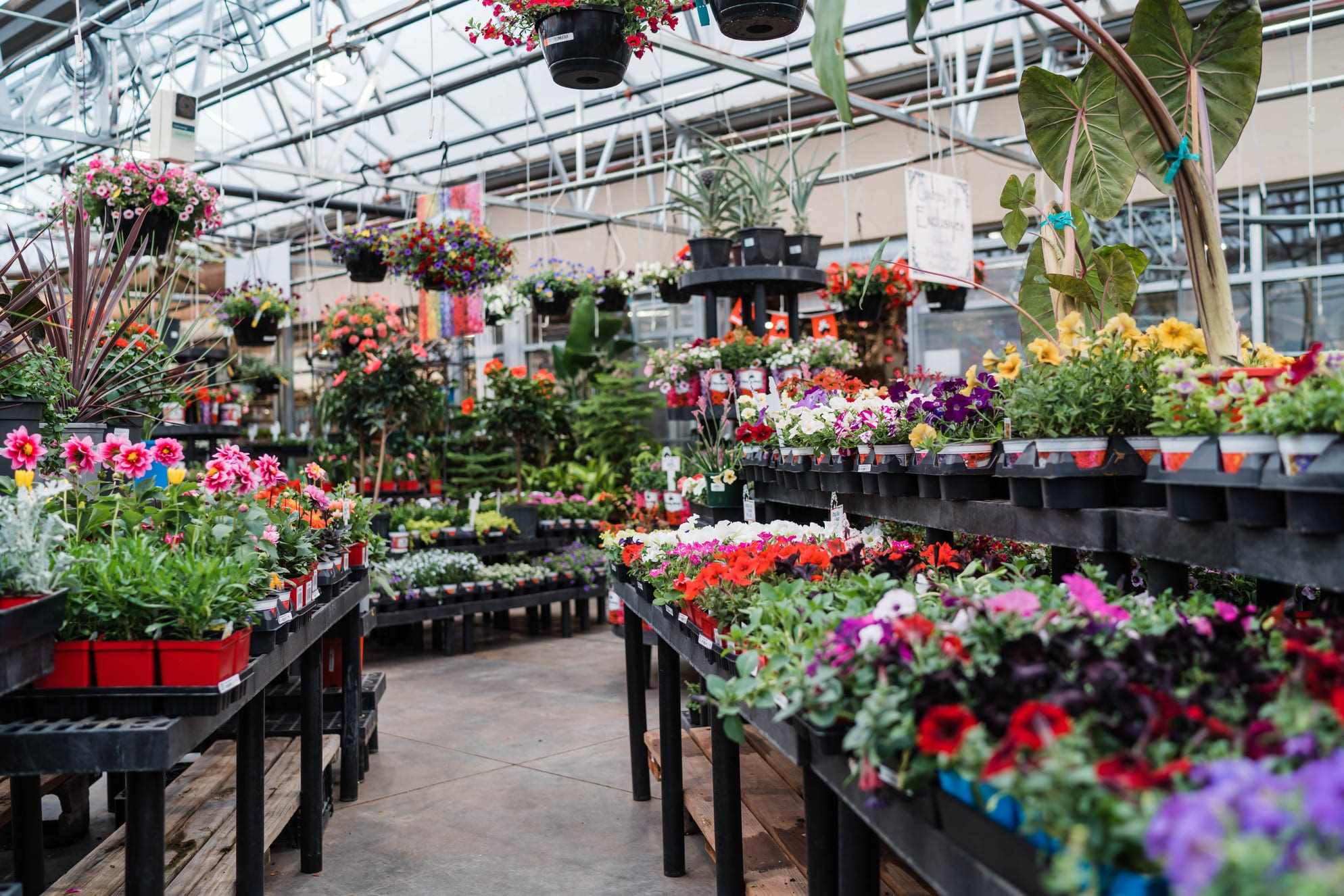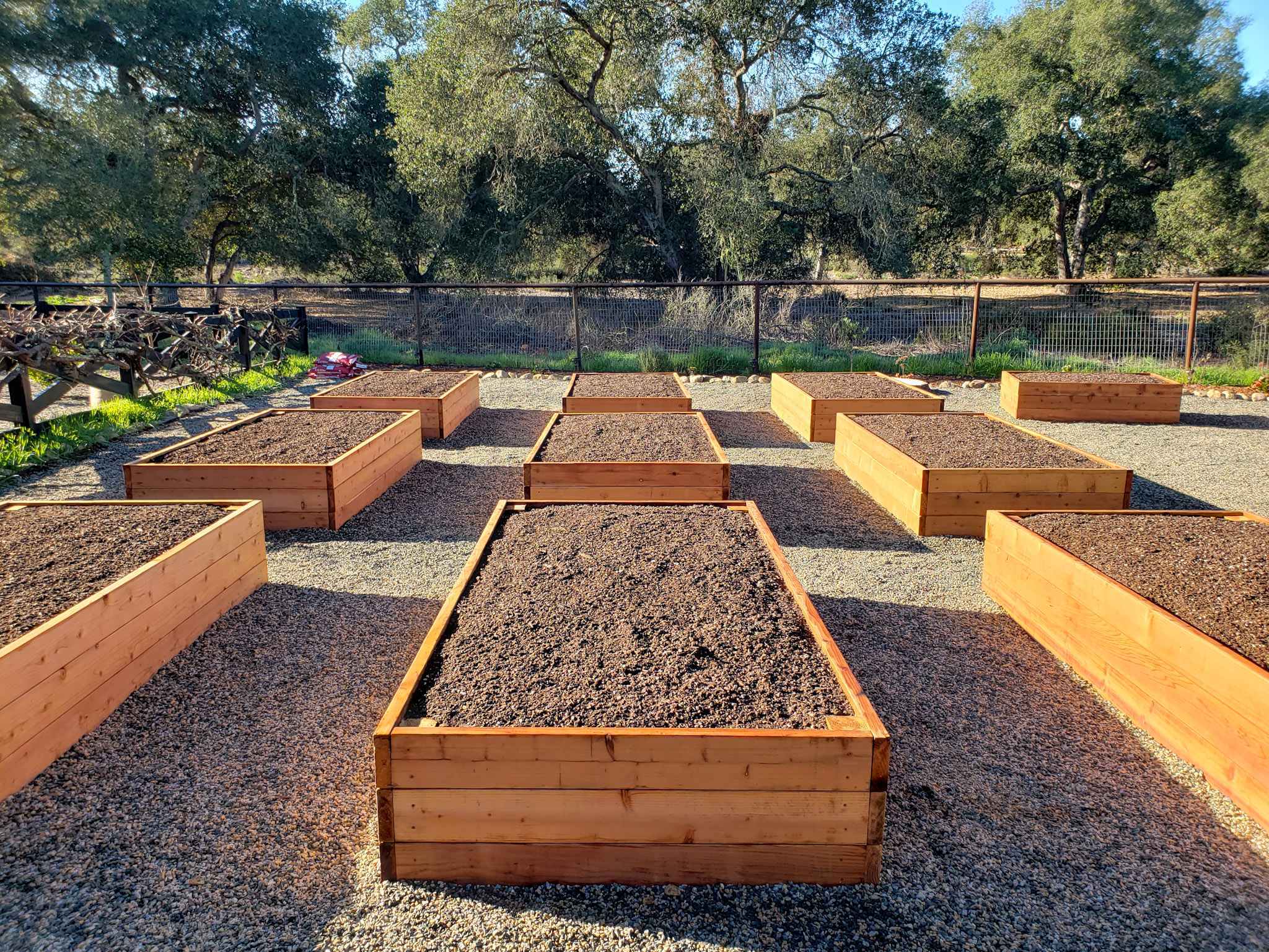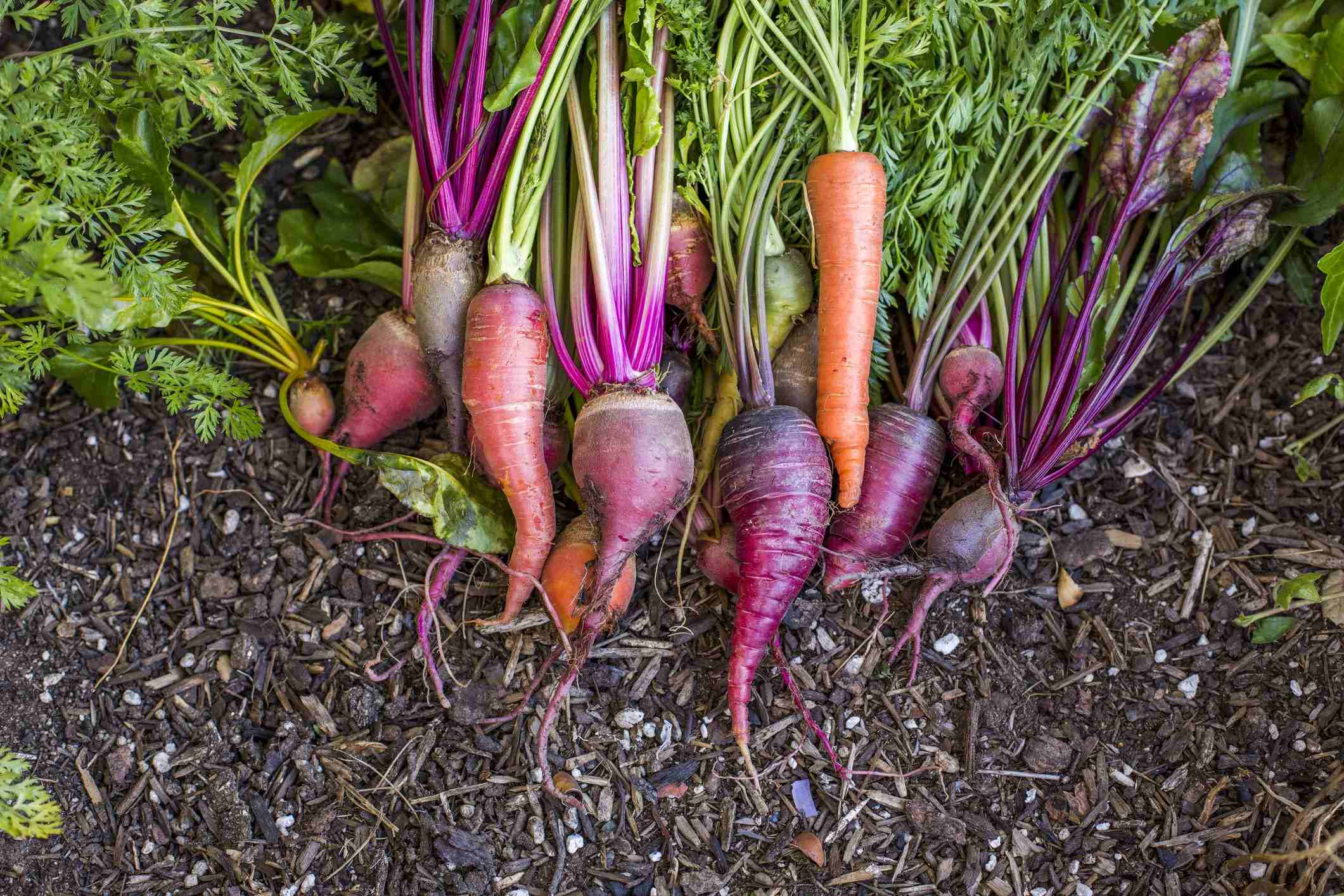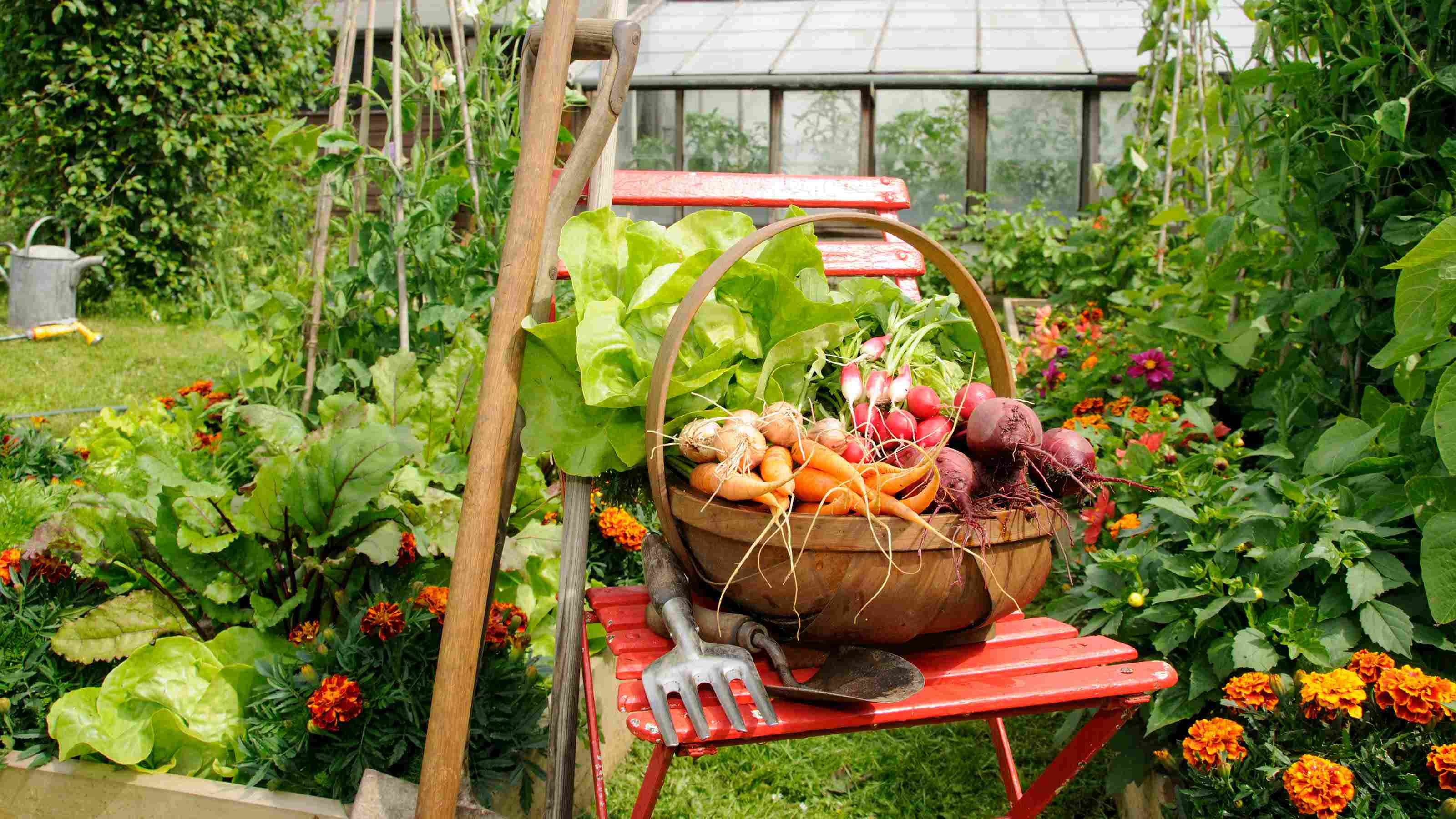Home>Gardening Tips and Tricks>Eco-Friendly Gardening>When To Apply Compost To Garden


Eco-Friendly Gardening
When To Apply Compost To Garden
Modified: February 9, 2024
Learn when and how to apply compost to your garden for eco-friendly gardening. Boost nutrient levels and improve soil health for vibrant, thriving plants.
(Many of the links in this article redirect to a specific reviewed product. Your purchase of these products through affiliate links helps to generate commission for Chicagolandgardening.com, at no extra cost. Learn more)
Table of Contents
- Introduction
- Benefits of Applying Compost to the Garden
- Understanding the Composting Process
- How to Create Quality Compost
- Factors to Consider Before Applying Compost
- Best Time to Apply Compost
- Applying Compost to Different Parts of the Garden
- Tips for Successful Compost Application
- Common Mistakes to Avoid When Using Compost
- Conclusion
Introduction
Welcome to the wonderful world of eco-friendly gardening! In today’s fast-paced and environmentally conscious world, more and more people are turning to sustainable practices, and one of the most effective ways to do so is by implementing eco-friendly gardening techniques. One such technique is the application of compost to your garden.
Compost is often referred to as “black gold” in the gardening community due to its numerous benefits and transformative properties. It is a rich, organic material that enhances soil fertility, improves plant health, and promotes a thriving ecosystem in your garden. By using compost, you can reduce chemical inputs, conserve water, and minimize waste, making it a perfect solution for those who strive to garden in an environmentally responsible way.
In this article, we will explore the various aspects of applying compost to your garden, including the benefits it provides, how to create quality compost, when and where to apply it, as well as some essential tips and common mistakes to avoid. By the end of this article, you will be equipped with the knowledge and understanding needed to make the most of your compost and create a thriving and sustainable garden.
So whether you’re a seasoned gardener looking to enhance your eco-friendly practices or a beginner eager to embark on a greener gardening journey, let’s dive in and explore the world of compost application in an eco-friendly garden!
Benefits of Applying Compost to the Garden
When it comes to gardening, compost is a powerhouse of benefits. Here are some of the key advantages of applying compost to your garden:
- Improves soil structure: Compost is rich in organic matter, which helps improve the soil structure by enhancing its drainage and water holding capacity. It also reduces soil erosion, allowing plants to establish strong root systems.
- Enhances nutrient content: Compost is a natural source of essential nutrients like nitrogen, phosphorus, and potassium. It enriches the soil, providing a steady release of nutrients to plants throughout the growing season. This reduces or eliminates the need for synthetic fertilizers, making it an eco-friendly choice.
- Increases microbial activity: Compost is teeming with beneficial microorganisms, including bacteria, fungi, and earthworms. These microorganisms break down organic matter and release nutrients, promoting a healthy and diverse soil ecosystem. This, in turn, improves nutrient uptake, disease resistance, and overall plant health.
- Retains moisture: Compost acts as a natural moisture regulator, helping the soil retain moisture for longer periods. This is particularly beneficial in dry or arid climates, where water conservation is crucial. By applying compost, you can reduce water usage in your garden, making it more sustainable.
- Suppresses diseases: Compost contains beneficial microorganisms that compete with harmful pathogens, preventing the development and spread of plant diseases. It creates a balanced microbial environment that supports plant health and reduces the need for chemical pesticides.
- Reduces waste: Composting allows you to divert organic waste from landfills and turn it into valuable soil amendment. By composting kitchen scraps, yard trimmings, and other organic materials, you contribute to reducing greenhouse gas emissions and creating a circular and sustainable gardening system.
These are just a few of the many benefits that compost offers to your garden. By incorporating compost into your gardening practices, you not only create a healthier and more productive garden but also contribute to a greener and more sustainable environment. So let’s explore the process of creating quality compost next!
Understanding the Composting Process
Composting is a natural process that involves the decomposition of organic materials into a nutrient-rich soil amendment known as compost. Understanding the basic principles of composting is crucial to creating high-quality compost for your garden.
The composting process is driven by a combination of microorganisms, including bacteria, fungi, and other decomposers, along with the help of oxygen, water, and temperature. These factors work together to break down organic matter and transform it into a stable and nutrient-rich product.
There are two main types of composting: aerobic composting and anaerobic composting. Aerobic composting, which requires oxygen, is the most common and efficient method. It involves creating piles or bins of organic materials, regularly turning them to ensure proper aeration, and maintaining the ideal moisture and temperature levels for decomposition.
On the other hand, anaerobic composting occurs without the presence of oxygen. It is a slower and less efficient process that often leads to the production of foul odors. It is generally not recommended for home gardeners unless specialized equipment and knowledge are available.
The composting process involves four main stages:
- Initial decomposition: In this stage, microorganisms break down easily decomposable materials such as fruit and vegetable scraps, grass clippings, and leaves. This initial decomposition creates heat, which is a sign that the process is progressing.
- Active decomposition: At this stage, the microorganisms begin breaking down tougher materials like woody stems and twigs. The temperature of the compost pile rises further, reaching its peak in the range of 130-160°F (54-71°C).
- Curing phase: Once the active decomposition subsides, the compost pile enters the curing phase. During this stage, the temperature gradually decreases, and the compost becomes more stable and mature. It develops a dark, crumbly texture and a pleasant earthy smell.
- Maturation: The final stage of the composting process is maturation, where the compost continues to age and stabilize. This can take several months to a year, depending on various factors such as the size of the compost pile and the materials used.
By having a clear understanding of the composting process, you can ensure that you create compost that is rich in nutrients, free from harmful pathogens, and suitable for use in your garden.
How to Create Quality Compost
Creating high-quality compost involves following a few key steps and principles. Here’s a step-by-step guide to help you create nutrient-rich compost for your garden:
- Select a composting method: Choose a composting method that suits your space and needs. Common options include traditional composting bins, tumblers, or vermicomposting using worms.
- Collect compostable materials: Gather a mix of green and brown materials for your compost pile. Green materials include kitchen scraps, fresh grass clippings, and plant trimmings. Brown materials include dried leaves, straw, wood chips, and shredded paper.
- Chop or shred larger materials: To speed up the decomposition process, chop or shred larger materials into smaller pieces. This increases the surface area, allowing microorganisms to break them down more efficiently.
- Layer the materials: Alternate layers of green and brown materials in your compost pile. Aim for a ratio of roughly 2 parts brown materials to 1 part green materials. This balance ensures proper carbon-to-nitrogen ratio and optimal decomposition.
- Add water: Moisten the materials as you layer them. The compost pile should be damp, similar to a wrung-out sponge. Proper moisture levels are crucial for the microorganisms to thrive and break down the organic matter.
- Mix and turn the compost: Regularly turn or mix the compost pile to aerate it and promote even decomposition. This can be done with a pitchfork or a compost turning tool. Mixing the pile also prevents it from becoming compacted.
- Maintain proper conditions: Monitor the temperature and moisture levels of the compost pile. Ideally, the temperature should stay between 130-160°F (54-71°C) during the active decomposition phase. Adjust the moisture levels if the pile becomes too dry or too wet.
- Wait for the compost to mature: Depending on various factors such as the size of the compost pile and the materials used, the composting process can take several months to a year. Allow the compost to mature until it has a dark, crumbly texture and an earthy smell.
- Sift and store the compost: Before using the compost, sift it to remove any large, undecomposed materials. Store the finished compost in a container or a designated compost bin until you are ready to apply it to your garden beds or potted plants.
By following these steps and principles, you can create high-quality compost that is rich in nutrients and beneficial microorganisms. Remember to be patient and consistent in maintaining the compost pile, as it will reward you with nutrient-dense soil amendment for your eco-friendly garden.
Factors to Consider Before Applying Compost
Before applying compost to your garden, there are several factors you should consider to ensure its effectiveness and maximize its benefits. These factors include:
- Compost maturity: Make sure that your compost is fully matured and properly decomposed before applying it to your garden. Mature compost should have a dark, crumbly texture and a pleasant earthy smell. Immature compost may contain pathogens or chemicals that can harm your plants.
- Quality of compost: Assess the quality of your compost by checking its nutrient content. Conduct a soil test or consult with a local agricultural extension service to determine if your compost provides sufficient nutrients for your plants. Adjust the application rates accordingly.
- Soil condition: Evaluate the condition of your soil before applying compost. Consider factors such as its pH level, texture, and fertility. Conduct a soil test to determine its nutrient deficiencies and pH level. This will help you determine the quantity and type of compost needed for your specific soil conditions.
- Plant requirements: Different plants have varying nutrient requirements. Consider the nutrient needs of the plants you are going to grow in your garden. Some plants may require more nitrogen, while others may need additional phosphorus or potassium. Tailor your compost application accordingly to meet the specific needs of your plants.
- Weather conditions: Take into account the weather conditions when applying compost. Avoid applying compost during heavy rainfall or extremely dry periods, as the nutrients may wash away or not be readily available to the plants. Aim for mild weather to provide the optimal conditions for the compost to integrate into the soil.
- Application method: Consider the most appropriate method for applying compost based on your garden layout and plant types. For large areas, you may prefer top-dressing the soil with a layer of compost and then gently incorporating it with a rake or hoe. For individual plants, create small compost-filled planting holes to provide direct nutrient access to the roots.
- Application rate: Determine the appropriate amount of compost to apply to your garden. This can vary depending on the nutrient requirements of your plants, the existing soil fertility, and the compost quality. Follow the recommended guidelines provided by your local agricultural extension service to ensure proper application rates.
- Compost placement: Consider where you want to apply the compost in your garden. You can spread it evenly across the entire garden bed, concentrate it around specific plants, or use it for new plantings or container gardening. Tailor the compost placement to meet the specific needs of your plants and garden design.
By taking these factors into consideration, you can ensure that your compost application is targeted and effective, providing the necessary nutrients and organic matter to support healthy plant growth and a thriving garden ecosystem.
Best Time to Apply Compost
The timing of compost application plays a crucial role in maximizing its effectiveness and benefits in your garden. Here are some guidelines to determine the best time to apply compost:
- Before planting: Ideally, it is best to incorporate compost into the soil before planting new crops or transplanting seedlings. This allows the compost to mix thoroughly with the soil, providing a nutrient-rich foundation for the plants.
- During the growing season: Compost can be applied to the soil surface around established plants during the growing season. This top-dressing method helps replenish nutrients, improve soil structure, and support healthy plant growth.
- Springtime: Many gardeners prefer to apply compost in the spring before the growing season starts. This allows the compost to fully integrate into the soil and provide the necessary nutrients for the plants as they begin their active growth phase.
- Fall season: Applying compost in the fall is also beneficial, especially for perennial plants and overwintering crops. The compost will slowly break down over the winter months, enriching the soil and providing nutrients for early spring growth.
- Mild weather: It is generally recommended to apply compost during mild weather conditions. Avoid extreme heat or cold, as this may impact the activity of beneficial microorganisms and the availability of nutrients to the plants.
- In conjunction with irrigation: It is beneficial to apply compost just before or after watering your garden. The moisture from the irrigation helps facilitate the breakdown of compost, allowing the nutrients to move into the soil and reach the plant roots more effectively.
- Maintenance applications: Regularly adding small amounts of compost throughout the year can help maintain soil fertility and support ongoing plant health. This can be done during routine garden maintenance, such as weeding or preparing new planting areas.
Keep in mind that the specific timing of compost application may vary depending on your location, climate, and the specific needs of your garden. It is always helpful to observe the growth patterns of your plants and monitor the condition of your soil to determine when it is most beneficial to apply compost.
By applying compost at the right time, you can ensure that your plants receive a continuous supply of nutrients, improve soil health, and foster robust growth and productivity in your garden.
Applying Compost to Different Parts of the Garden
When it comes to applying compost, different parts of the garden have different needs. Here’s a guide on how to effectively apply compost to different areas:
1. Garden Beds:
For garden beds, spread a layer of compost evenly over the soil surface. Aim for a thickness of about 1 to 2 inches (2.5 to 5 cm). Gently rake or hoe the compost into the top 4 to 6 inches (10 to 15 cm) of soil to ensure proper incorporation. Avoid covering the stems or foliage of existing plants.
2. Vegetable Gardens:
In vegetable gardens, it is best to apply compost before planting or as a top-dressing around established plants. For new beds, incorporate a generous layer of compost into the soil a few weeks before planting to enrich and prepare the soil. When top-dressing, apply a thin layer of compost around the base of the plants, avoiding direct contact with the stems.
3. Flower Beds:
When applying compost to flower beds, follow a similar approach as with garden beds. Spread a layer of compost over the soil surface and gently mix it into the top few inches of soil. Be cautious around delicate or shallow-rooted plants to avoid damaging their roots.
4. Container Gardens:
Compost can be used to refresh and replenish container gardens. Remove the top layer of old potting mix and replace it with a mixture of compost and fresh potting soil. Aim for a ratio of around 20% compost to 80% potting soil. Mix the two components thoroughly before refilling the containers.
5. Lawn:
Compost can benefit lawns by improving soil quality and promoting healthy grass growth. To apply compost to your lawn, spread a thin layer, no more than 1/4 inch (0.6 cm) thick, over the grass. Use a rake or a specialized compost spreader to ensure even coverage. Water the lawn lightly after application to help the compost settle into the soil.
Remember to adjust the amount of compost and the frequency of application based on the specific needs of your plants and the condition of your soil. It is also essential to follow any specific guidelines or recommendations provided by your local agricultural extension service or gardening experts.
By applying compost to different areas of your garden, you can provide the necessary nutrients, improve soil structure, and promote overall plant health and vitality.
Tips for Successful Compost Application
When it comes to applying compost to your garden, following a few tips and best practices can help ensure successful results. Here are some tips to keep in mind:
- Use fully decomposed compost: Ensure that your compost is fully decomposed and matured before application. Immature compost may contain pathogens or weed seeds that can harm your plants.
- Apply compost in moderation: Avoid over-application of compost, as excessive amounts can lead to nutrient imbalances or waterlogged soil. Follow the recommended application rates based on your soil test results or expert guidelines.
- Spread compost evenly: When applying compost, aim for an even distribution across the target area. This helps ensure that nutrients and organic matter are available to all the plants, promoting uniform growth and health.
- Avoid direct contact with plant stems: When applying compost, be mindful to keep it away from the stems and foliage of plants. Direct contact can create a damp environment that may encourage disease or rot.
- Water after application: After applying compost, give the area a gentle watering. This helps settle the compost into the soil and ensures that the nutrients are readily available to the plants.
- Mulch the compost: Consider mulching over the compost layer with organic materials, such as straw or wood chips. Mulching helps conserve moisture, suppress weeds, and further enrich the soil as the mulch breaks down.
- Monitor and adjust: Regularly monitor the health and growth of your plants after applying compost. Adjust the compost application rates or frequency as needed, depending on the response of your plants and the overall soil conditions.
- Combine compost with other organic amendments: Enhance the benefits of compost by combining it with other organic amendments, such as aged manure, bone meal, or rock phosphate. This helps provide a wider range of nutrients and promotes balanced soil fertility.
- Consider season-specific compost application: Tailor your compost application based on the specific needs of different seasons. For example, apply compost in spring to support vigorous plant growth or in fall to replenish nutrients for overwintering plants.
- Keep a composting routine: Maintain a regular composting routine to ensure a steady supply of high-quality compost for your garden. Continuously add compostable materials, monitor the composting process, and turn the pile regularly for efficient decomposition.
Following these tips will help you achieve successful compost application and maximize the benefits for your garden. Remember that composting is a continuous process, and by consistently applying compost, you can build and maintain healthy, nutrient-rich soil that promotes the thriving growth of your plants.
Common Mistakes to Avoid When Using Compost
While compost is a valuable asset in the garden, it’s important to avoid common mistakes that can hinder its effectiveness or potentially harm your plants. Here are some key mistakes to avoid when using compost:
- Using unfinished or immature compost: Applying compost that is not fully decomposed can introduce weed seeds, pests, or diseases into your garden. Make sure your compost is matured, dark, and crumbly.
- Over-applying compost: While compost is beneficial, using excessive amounts can lead to nutrient imbalances or waterlogging in the soil. Follow recommended application rates and consider the specific needs of your plants.
- Applying compost too close to plant stems: Directly applying compost near the stems of plants can create a damp environment that promotes disease and rot. Keep a distance between the compost and the plant stems to prevent potential issues.
- Not incorporating compost into the soil: Simply spreading compost on top of the soil without incorporating it can result in uneven distribution and limited direct contact with plant roots. Mix compost into the soil to ensure proper integration and nutrient availability.
- Applying compost to waterlogged or dry soil: Avoid applying compost to soil that is excessively wet or dry. Waterlogged soil can hinder root growth and nutrient absorption, while dry soil may not effectively utilize the compost. Wait for appropriate soil moisture conditions before applying compost.
- Using low-quality compost: Poor-quality compost that is contaminated with toxic substances or persistent herbicides can harm your plants. Use compost from trusted sources or consider creating your own compost to ensure its quality and safety.
- Ignoring the specific needs of plants: Different plants have varying nutrient requirements. Take into account the specific needs of your plants and adjust the compost application rates or types of compost used accordingly to support their growth.
- Mixing incompatible ingredients in the compost pile: Certain materials, such as meat, dairy, oily food waste, or diseased plant matter, should not be composted in home composting systems. Be mindful of what you add to your compost pile to avoid introducing potential issues.
- Applying compost at inappropriate times: Timing is crucial when it comes to compost application. Applying compost during extreme weather conditions or when the soil is frozen may hinder its effectiveness. Choose appropriate times during the growing season or follow specific seasonal recommendations.
- Not monitoring and adjusting: Regularly assess the health of your plants and the condition of your soil, and make necessary adjustments in compost application rates or other soil amendments. Soil conditions and plant requirements can change, so maintaining flexibility is important for optimal results.
By avoiding these common mistakes, you can ensure that your compost application is effective, safe, and beneficial to your garden. Remember to take into account the specific needs of your plants, the quality of your compost, and the timing of application for the best results.
Conclusion
Composting is not only an excellent way to reduce waste and contribute to a more sustainable environment, but it also provides numerous benefits for your garden. By applying compost, you improve soil structure, enhance nutrient content, promote microbial activity, retain moisture, suppress diseases, and reduce waste. It’s a win-win situation for both your garden and the planet.
Understanding the composting process and creating high-quality compost are essential steps in reaping the full benefits of this organic wonder. Consider factors such as compost maturity, soil condition, plant requirements, and weather conditions before applying compost. Tailor your compost application to the specific needs of different garden areas, including garden beds, vegetable gardens, flower beds, containers, and lawns.
To ensure successful compost application, follow tips such as using fully decomposed compost, spreading it evenly, avoiding direct contact with plant stems, and adjusting the application rates based on plant and soil requirements. Additionally, be mindful of common mistakes to avoid, including using immature compost, over-applying compost, and ignoring specific plant needs.
By incorporating compost into your eco-friendly gardening routine, you not only nourish your plants, but you also contribute to the health of the soil and the overall sustainability of your garden. So, roll up your sleeves, get creative, and let compost be the secret ingredient that transforms your patch of earth into a thriving, vibrant, and environmentally friendly oasis.



